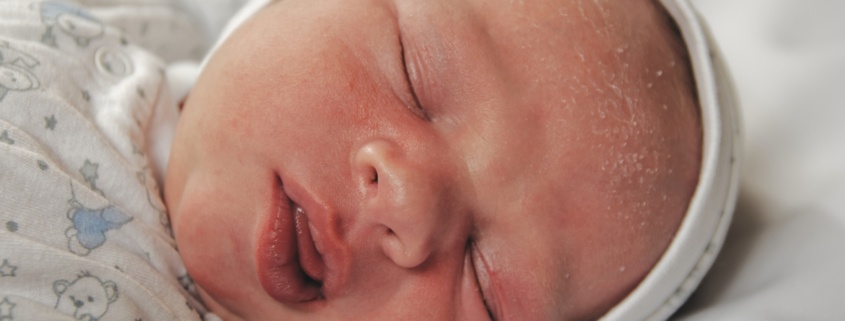Dealing with Cradle Cap on Baby’s Face
We most often think of cradle cap as occurring on baby’s scalp, but it can also be found on the face and other areas. Babies have soft, delicate skin that is prone to a variety of relatively harmless conditions.
Cradle cap on the face can look unpleasant, but it is an incredibly common issue. And, it’s no reflection on parents!
Cradle Cap on the Face
Cradle cap is the common term used for seborrheic dermatitis, a noninfectious skin condition that often occurs in infants. Cradle cap can appear as early as a few weeks after birth and usually disappears within a few months.
Symptoms of Cradle Cap on the Face
Cradle cap might appear in these areas:
- Scalp
- Face
- Eyebrows
- Ears
- Back of the neck
- Skin folds
- Diaper area
It most often appears as patchy scales, flaky white or yellow scales, skin flakes and/or redness.
Treating Cradle Cap
A few at-home steps can help clear up symptoms of cradle cap.
- Wash skin with a gentle baby shampoo or wash. Cradle cap is thought to be caused by overactive oil glands. So, leaving your baby’s face and hair unwashed will slow recovery.
- Gently brush skin. A gentle brush can help lift the flakes and scales. The Bean-b-Clean cradle cap brush [link] is specifically designed to help without irritating baby’s scalp.
- Massage the area. Gently rub the affected skin with a soft brush or washcloth. Avoid scrubbing at their skin.
- For tough cases, massage a small amount of plant oil like coconut, or almond oil onto the skin. Remove gently with a washcloth. Don’t leave the oil on your baby’s face. Doing so can make cradle cap worse because the oil will block their glands.
Time Will Help
Cradle cap on the scalp, face and other location is almost always temporary. It can be frustrating to see your baby’s beautiful face affected by flakes and scales, but things should clear up with a little time.
Cradle cap usually appears between 2 to 6 weeks after birth and clears up within a few months. It rarely extends beyond infancy.
Patience and a gentle baby skin care routine are the best things you can do to help your little one’s skin clear up.
Talk with your child’s pediatrician if you’re concerned.


